By Stefano Tiozzo
Powered Seva Project
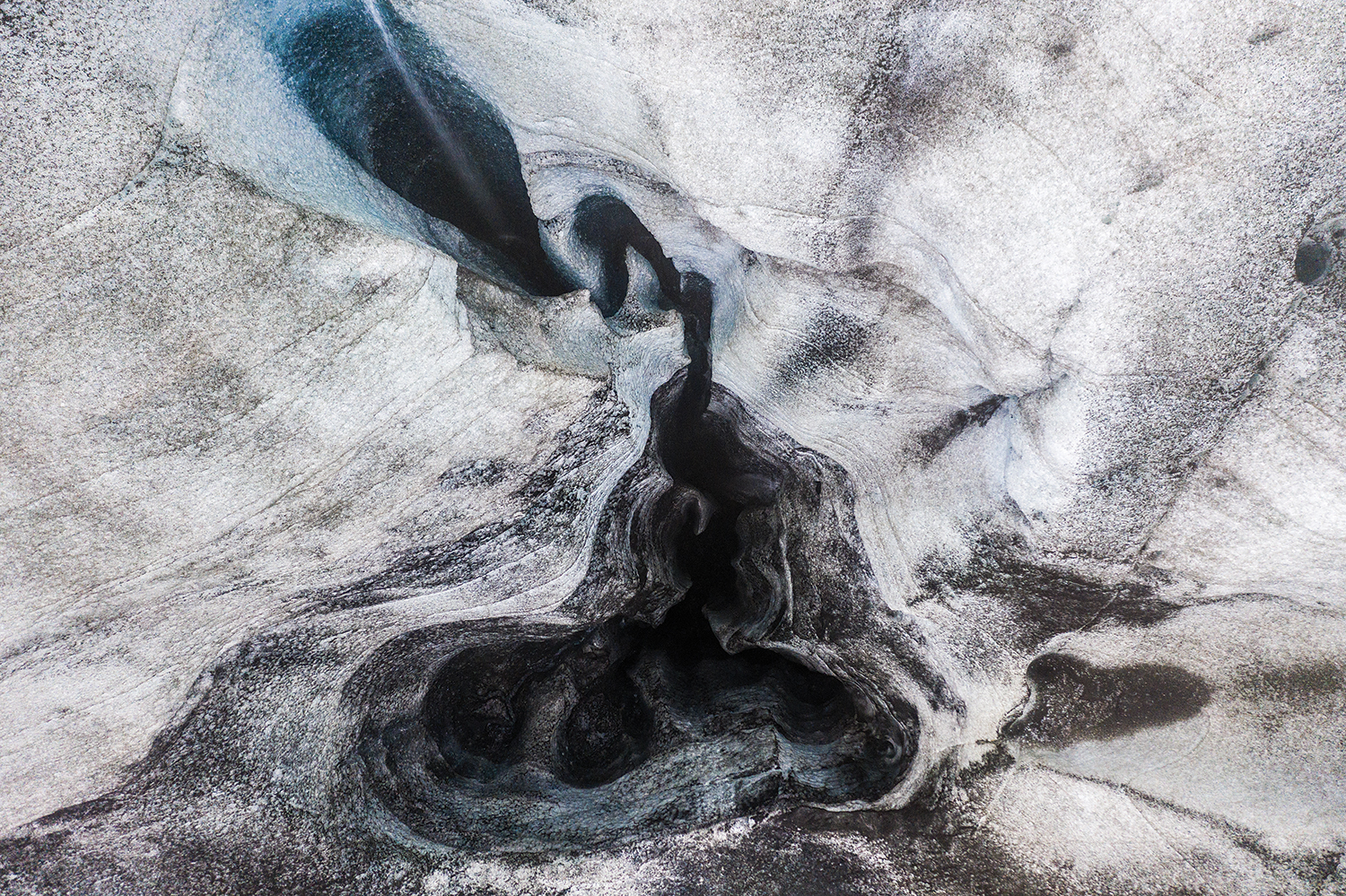
First death of a Glacier
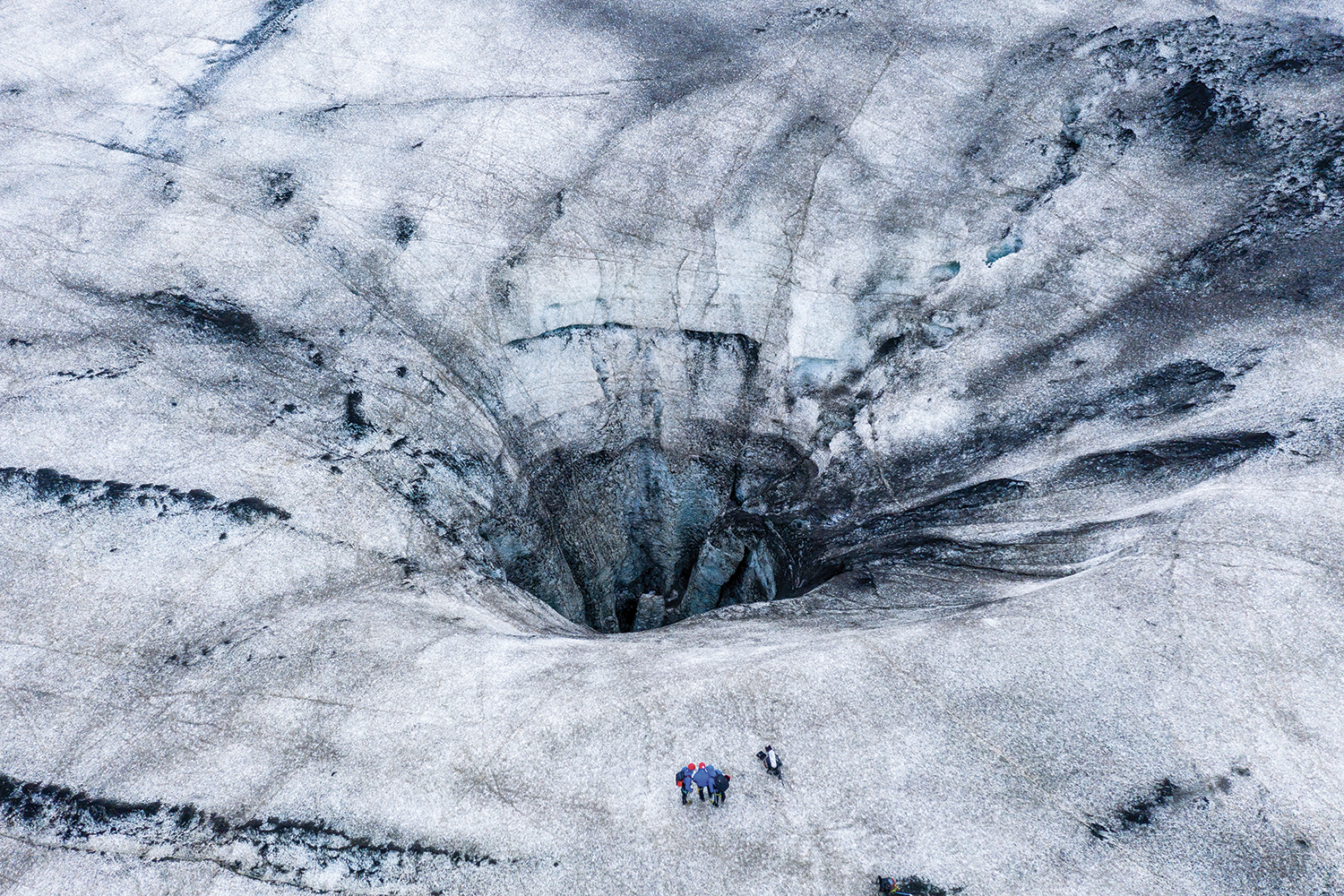
It’s a grey morning in Reykjavik on August 18th, 2019, but nevertheless the weather is nice, about 14 Celsius degrees, quite above the seasonal averages. Unfortunately, Iceland is one of the lands that has experienced the greatest heating in the last 20 years. In a small suburban parking lot, a small group of about 80 people gather in front of a bus. They wear mountain clothes, a typical group of people ready for an excursion. Except that the destination of this excursion no longer exists.
In 2014 a team of glaciologists publicly announced the disappearance of the Okjökull, a small glacier in the central Icelandic plateaux officially degraded to snowfield. The cause is global warming. We killed this glacier with global warming caused by excessive emissions of greenhouse gases into the atmosphere. After a few years of monitoring, the diagnosis is confirmed. We have to say goodbye to the first white giant who abandons us in this bizarre self-destructive path that we have taken. The 80 hikers are about to climb to the top of the mountain to celebrate the first funeral of a glacier in human history. And we are with them.
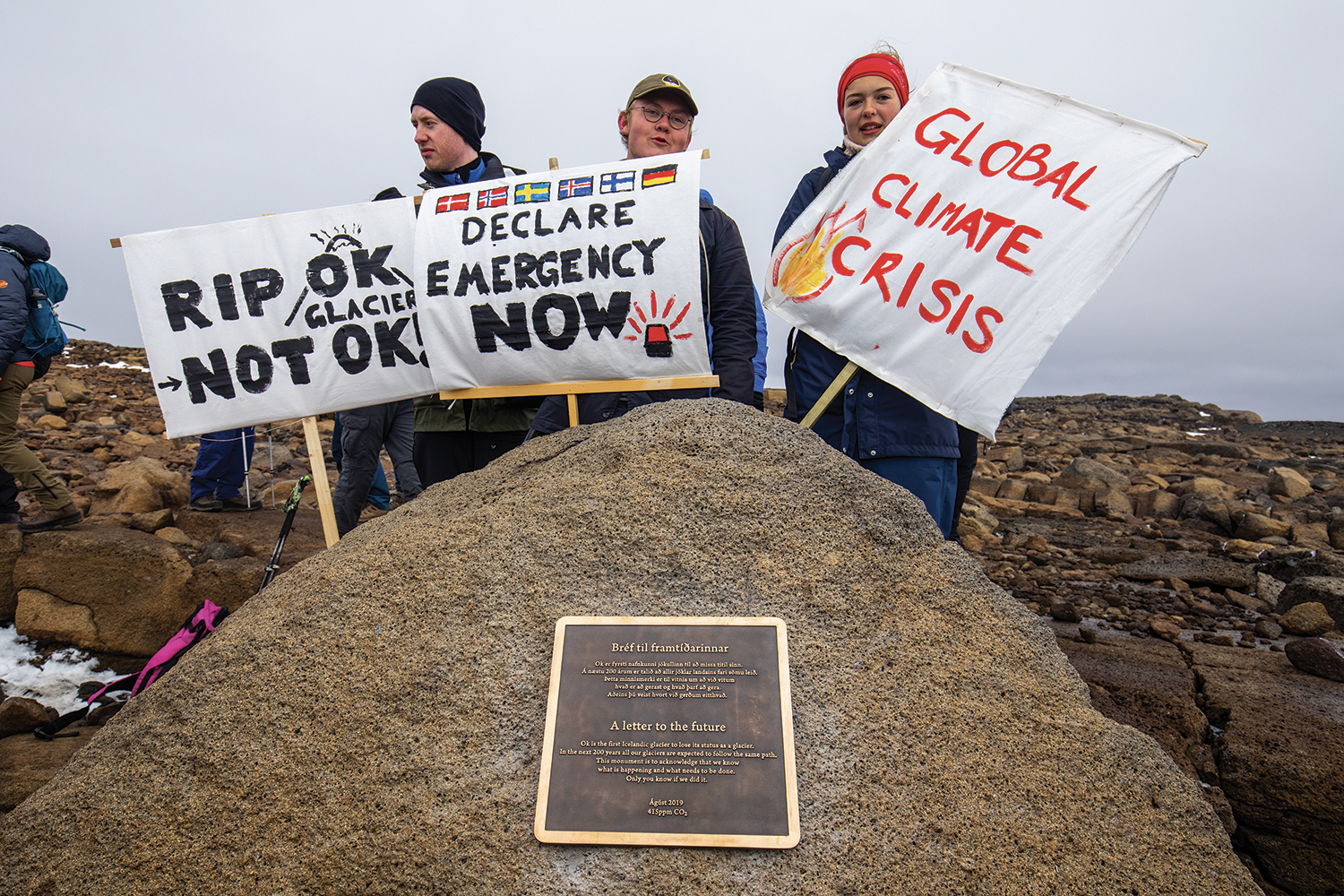
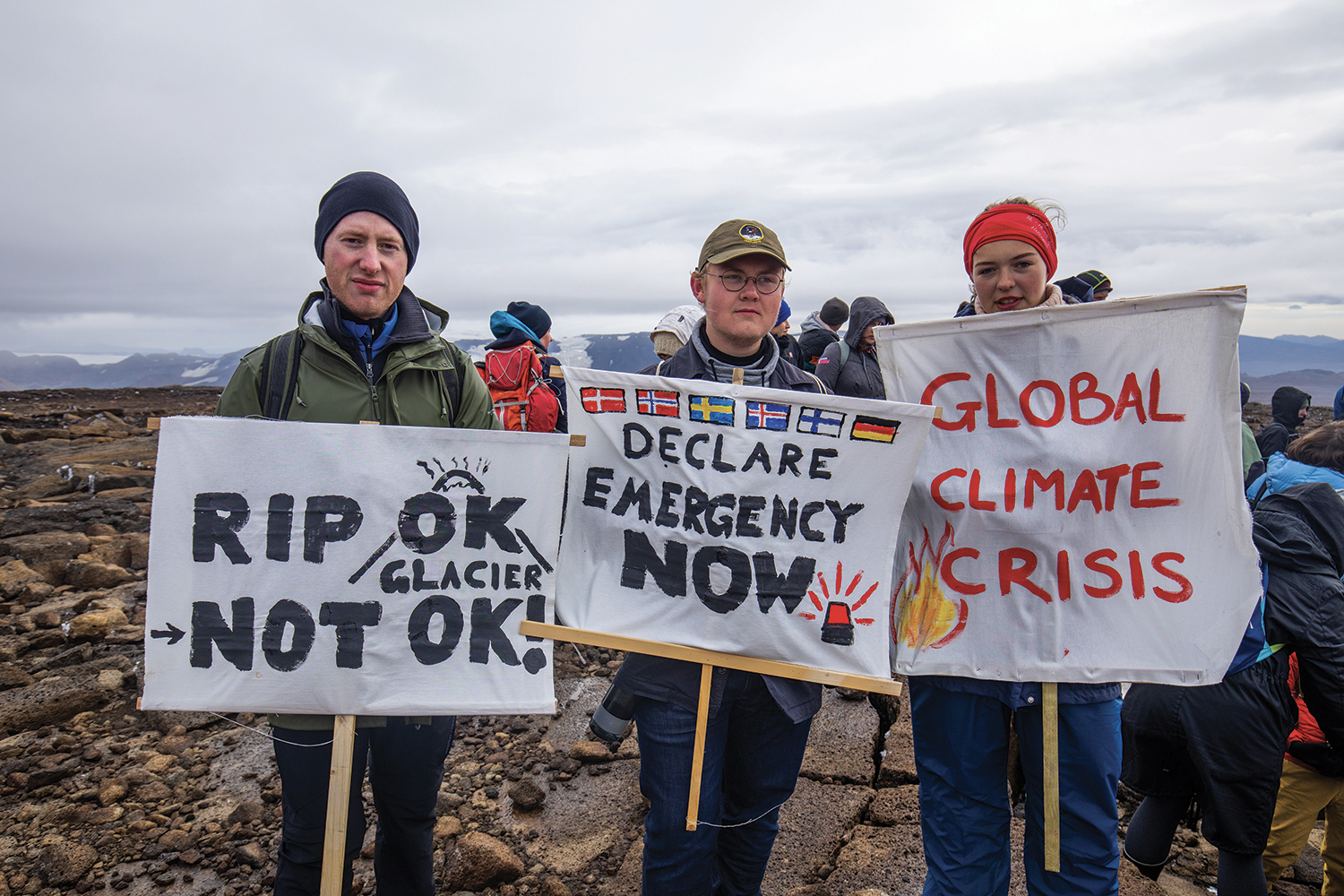
I’ve landed in Iceland with a troupe of 3 people to shoot a documentary about Climate Change and renewable energies in Iceland whose proceeds would go to a reforestation project of the Madagascr indigenous rainforest, the Seva Project. Having images of the first funeral of a glacier would have been an unmissable opportunity and so here we, are ready to follow the funeral convoy. All people seem calm and informal, no one has logos of television stations on, it looks like we are ready for a Sunday trip.
We’ll be climbing for about 1000 meters high, nothing too demanding except that there is no trail, only a large stony ground. While we dress up on the car we notice a great excitement around a bus and then discover that Katrin Jakobsdottir, Iceland’s prime minister, has also arrived for the occasion. Next to her, an elegant dark-skinned man visibly struggling with the cold climate, probably linked to Amnesty International, and Mary Robinson, the former prime minister of Ireland and nowadays involved in the environmental issue. The ingredients for a historic day are all there.
We start to climb. I’m walking very close to Katrin and her assistant comes up to me and asks “which tv station are you working for?”. I don’t think about it twice and answer “Italian television”. But they believe me, also because Simone, our sound engineer, has by far the most showy and professional gears of the whole group, a suit sometimes does make the man. And so I improvise an interview for our documentary. I feel almost embarrassed but I try to concentrate on the questions and somehow we made it, we have now a totally unexpected contribution that gives great value to our work.
The weather is cloudy but it doesn’t rain. The wind is almost acceptable but the terrain is terribly difficult and irregular. The climb is about 1h30 and the guides are very clear in telling us to never lose visual contact with the rest of the group: there is no route, the terrain is completely identical and above all in the highlands weather can change in less than a minute and covered everything with fog: getting lost here, without any reference point, means dying.
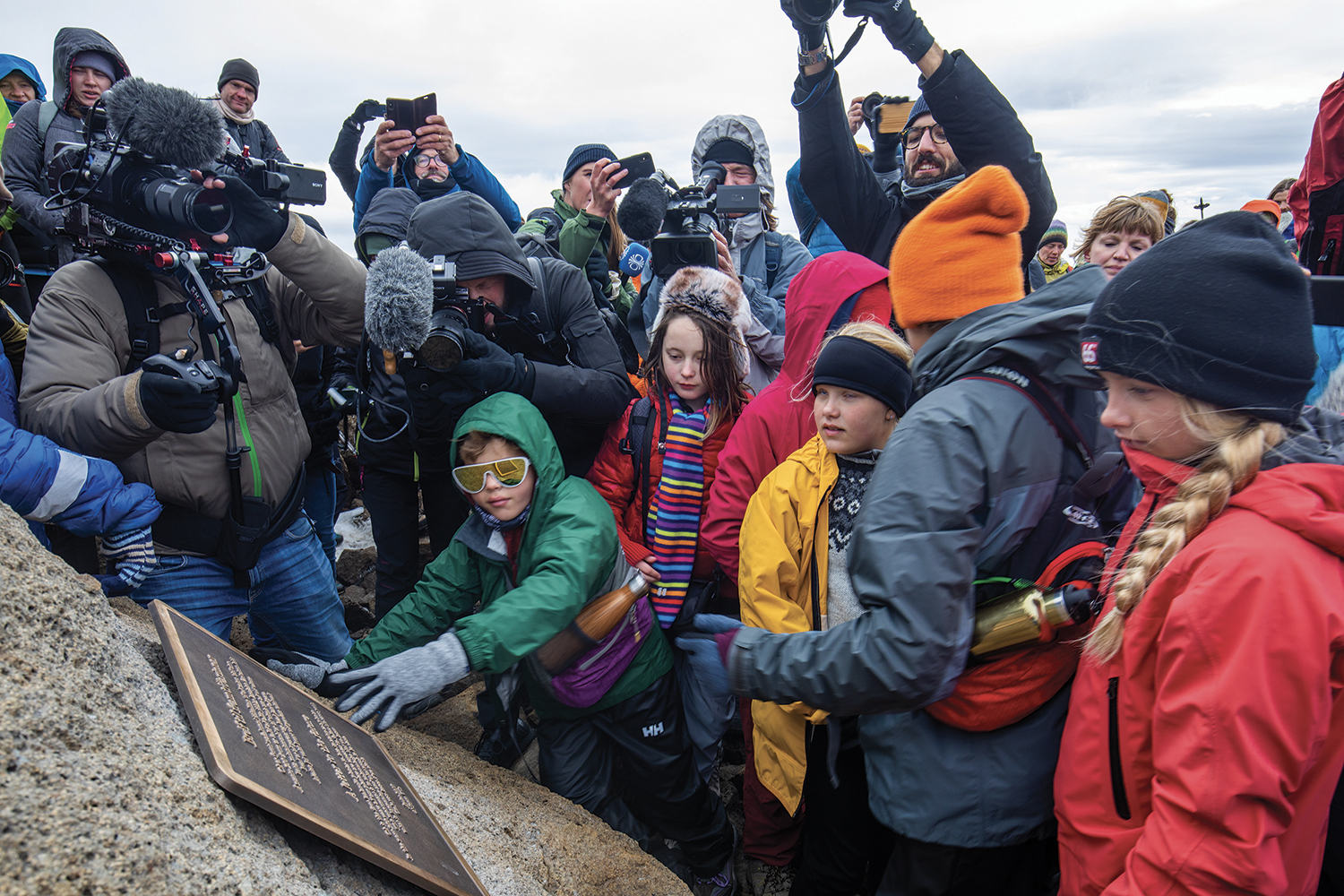
As soon as we go up the temperature drops, while the wind increases. On the rocks begin to appear ice crystals shaped by the wind, a sign of a recent snowfall that is about to melt, we’re very close now. We arrive at the base of a wall of stones, clearly the tip of the mountain we are climbing, the group stops and I take this opportunity to fly my drone, from the images transmitted to the controller I finally see the big white patch of what remains of the Okjökull, nestled in what looks like a crater of an extinct volcano. The volcano is visible today but 30 years ago it was not. The photos of the “before and after” are unforgiving.
I think that only 10 years ago I could never have been here without crampons and an ice ax, then a man takes the floor: it’s time for the funeral.
“Unfortunately we do not have a tradition concerning the funeral of glaciers, no one has ever done one, so we decided to follow an ancient Icelandic tradition when we climb mountains: we’ll climb these last meters in silence, without ever looking back, expressing 3 wishes. Tradition says that if we respect these conditions, our wishes will be fulfilled”. So we climb, in silence, without looking back, until we reach the edge of the snowfield where the site of the tombstone to be installed was prepared on a large boulder, on which an epitaph reads: “A letter to the future: this monument is here to testify that we know what is happening and what needs to be done instead. Only you will know if we did it or not”.
A clear SOS message to the world, to governments, to people.
11 billion tons of ice melt each year in Iceland. Within 150 years all the glaciers of Iceland will follow the same fate if the trend will not be reversed.
Who knows if in the distant future someone will ever come up here, in this remote place and who knows in what conditions the Earth will be at that moment. What we are doing up here is equivalent to sending a letter into space, a message of help rolled up in a bottle in the middle of the ocean.
In the end, the plaque is placed in position and pushed to the bottom by the hands of 4 children, a symbol of future generations to which we are leaving a sick world. It is an extremely touching moment, around us there’s silence, only the clicks of the cameras and the hiss of the wind. After the plaque is laid, a group of men intones the Icelandic anthem a cappella and a young Icelandic environmental activist reads a poem in the local language.
This is the end, people slowly start to go down because a snow storm is coming. The temperature has dropped to zero and it begins to snow. It’s not easy to talk in front of a camera when you have the clock running fast, and above all the muscles of the face almost paralyzed by wind and cold, but I have to do it no matter what. I stumble on words and get confused, but I decide not to think about it, just do it. I record my speech all together and put my backpack on, under the impatient gaze of the last mountain guide waiting for us. As we descend the last few meters the storm really arrives and disperses that small group of humans who have come to represent their species crying crocodile tears on an announced disappearance that will probably only be the first of a long series. Or maybe not. The reality is that it only depends on us, and the time has come to choose which side you’re on.